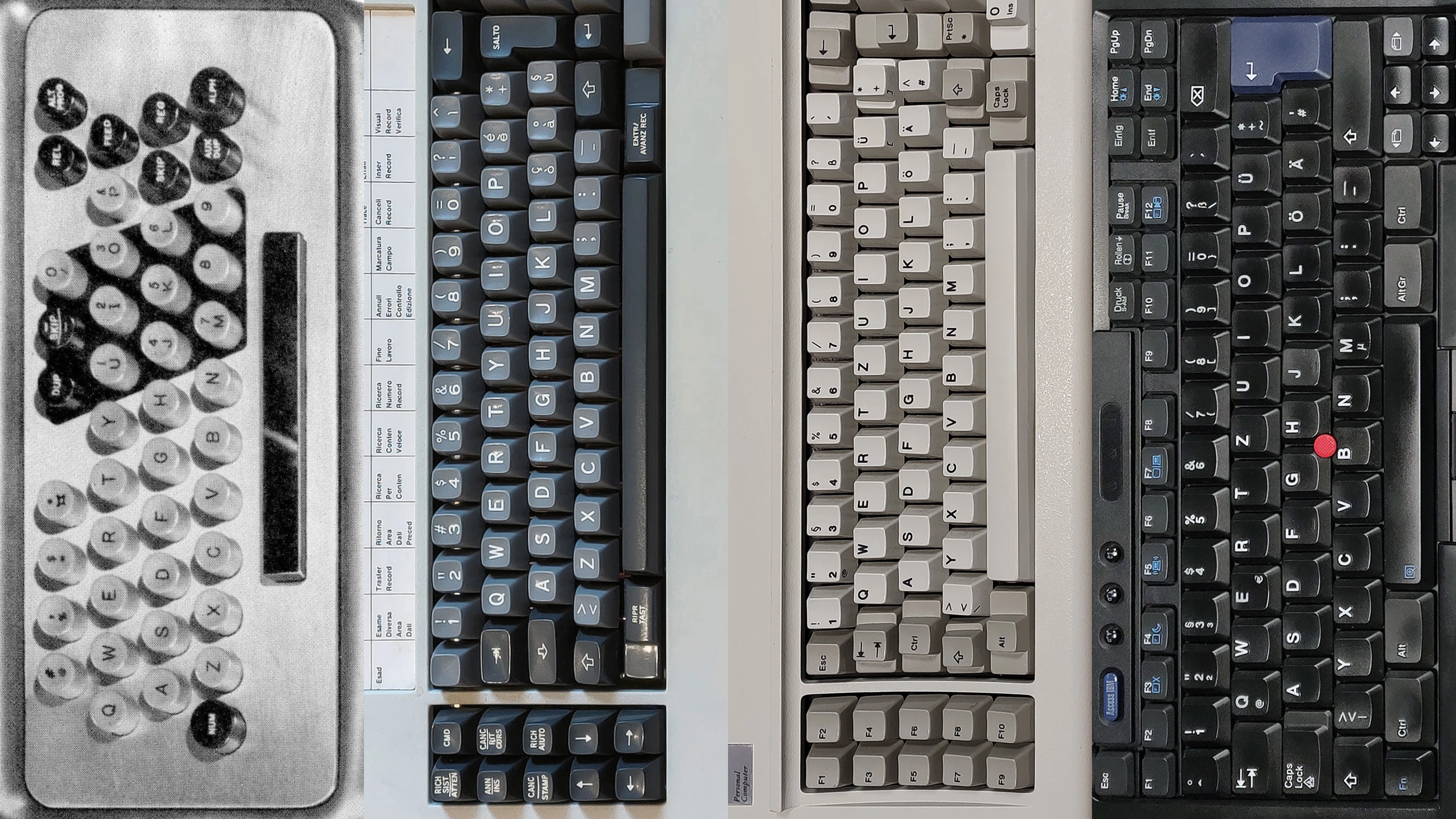A timeline of IBM keyboard history
The IBM and family keyboard timeline is an illustrated overview of some of the most important events affecting IBM, Lexmark, Unicomp, Lenovo and Toshiba Global Commerce Solutions keyboards. This includes notable keyboard releases and withdrawals, corporate history like company founding, divestures and change in OEMs, and patents. Due to their relationship and impact on the keyboards around them, host devices such as personal computers, terminals, consoles and typewriters also appear throughout the timeline. 144 events have been recorded for the "show all" versions of the timeline.
[ASK] Richard Hunter Harris and Robert John Wolfram patent the beam spring (switch button with snap mechanism) keyswitch for IBM. The design has a leaf spring that rests at a downwards bent position, which when force is applied, snaps to an inverted position. The movement lifts a capacitive fly plate away from a pad card that can perform capacitance sensing, which is interpreted as a key press.
[1] The IBM Model B (beam spring) keyboard family is introduced with the IBM 3158 66-key Display Console Keyboard as IBM's fourth generation of keyboards.
[2] The IBM System/34 midrange computer is introduced, along with the 5250 Information Display System to serve as its terminals. IBM 5250 includes the 5251 Display Station (pictured) and 5252 Dual Display Station, and the 66-key (525X-66 type) and 83-key (525X-83 type) (pictured) Model B keyboards.
[3] The IBM Base Keyboard debuted in the form of the Model B-based 75-key and 87-key (pictured) IBM 3276 and 3278 Display Station Keyboards. The Base Keyboard was considered by IBM to be the direct predecessor to the Converged Keyboard design. The Base layout became somewhat of a standard for IBM, though perhaps competed with the IBM 5251/5252 layouts.
[4] IBM announces the Displaywriter System, a modular diskette-based word processing system. At its core is the 6580 Displaywriter Display Station with its Displaywriter Display Station Keyboard Module (630X type Model B). The keyboard design is recycled from the IBM 5253/5254 Display Station, inheriting its internal speaker and likewise is available in either a 92 or 96 character variant.
- うぃき野郎 - File:IBM System370 model 138.jpg [accessed 2023-12-09]. License/note: CC BY-SA 4.0 (cropped).
- IBM - IBM System/34 Introduction (#GC21-5153-4) [accessed 2023-01-16]. License/note: document archived by bitsavers, photos used under fair dealing.
- TheMK#1822 - donated photos. License/note: CC BY-NC-SA 4.0.
- IBM - IBM Displaywriter System General Information Manual (#G544-0851-5) [accessed 2023-12-06]. License/note: document archived by bitsavers.
